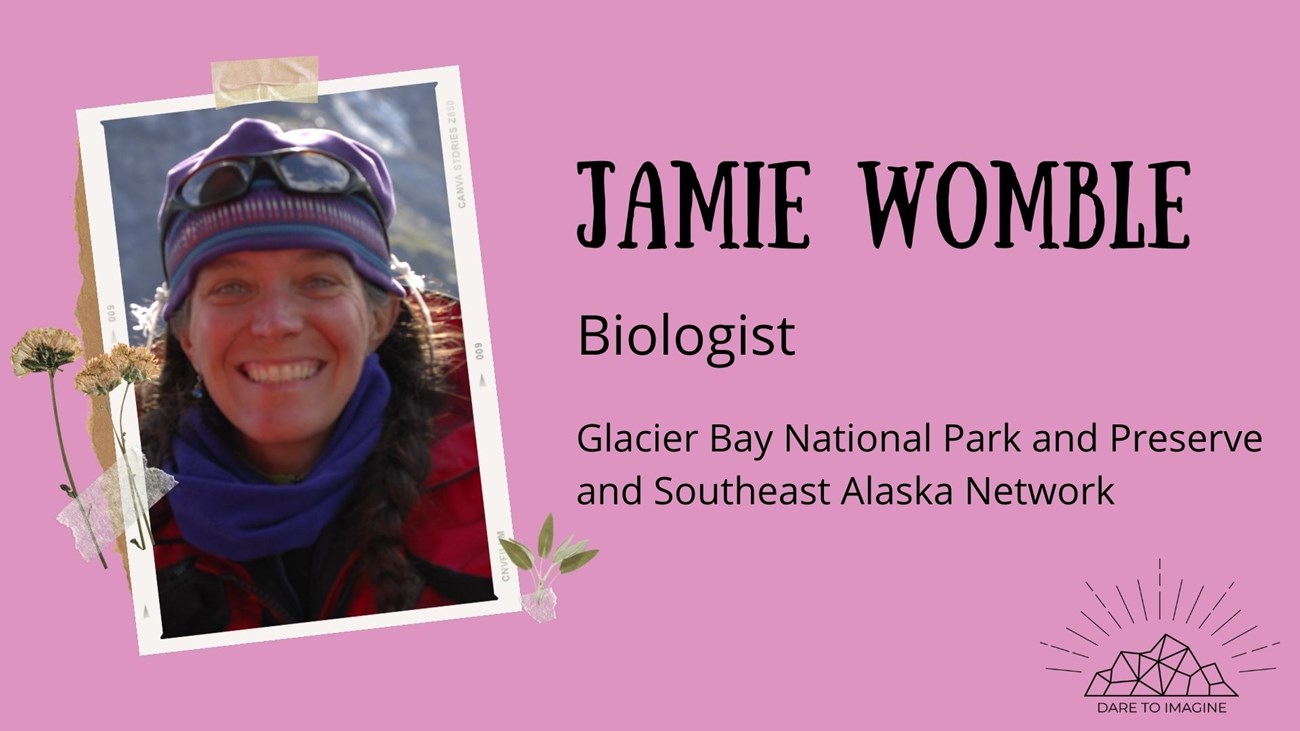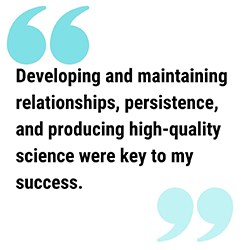Last updated: August 17, 2021
Article
Dare to Imagine: Jamie Womble

Woman Lifting Other Women
Jamie, what project would you like to highlight?
Understanding how glacier ice habitat is changing for harbor seals in Glacier Bay National Park and Preserve

Will you tell us a little about that project?
Glacier Bay National Park and the Glacier Bay Field Station, in partnership with the Geophysical Institute - University of Alaska Fairbanks and the National Marine Mammal Laboratory – Polar Ecosystem Program, have recently embarked on a new project that uses aerial digital imagery, Geographic Information Systems (GIS), remote sensing technology, and geospatial models to assess the relationship between the availability of glacial ice and harbor seal spatial distribution and abundance in Johns Hopkins Inlet in Glacier Bay National Park.
The primary objectives of this project are:
- to provide a permanent record of the spatial distribution of harbor seals and glacial ice
- to derive ice characteristics and associated covariates from aerial digital imagery data
- to use the derived ice characteristics and seal presence data from aerial surveys to model the relationship between ice cover, ice characteristics, and seal presence in a statistical modeling framework.
Learn more on our project's page!

How did you get to where you are now? What was your path like?
I first worked for NPS in 1996 as a biological technician in Glacier Bay National Park & Preserve, when I was an undergraduate student studying marine biology at University of Alaska. I continued my educational and professional pursuits for the next several years, including completing a Ph.D. in Wildlife Science, with a focus on marine ecology. My specific research interests revolve around understanding how environmental factors, such as habitat (e.g., ice) and prey availability influence the distribution, abundance, and behavior of marine mammals.
Over the course of my professional development, I have had the opportunity to work and live in ecosystems and oceans across the northern and southern hemispheres and spend time on all seven continents.
- Education & Academic Preparation Endeavour Post-Doctoral Research Fellow 2014-2015
- Institute for Marine & Antarctic Studies, University of Tasmania, Hobart, Tasmania, Australia Ph.D. 2012
- Wildlife Science Oregon State University, Corvallis, Oregon M.S. 2003
- Fisheries University of Alaska Fairbanks, Fairbanks, Alaska B.S. 1998
- Biology University of Alaska Southeast, Juneau, Alaska B.S. 1992
- Finance Appalachian State University, Boone, North Carolina
- In addition to my academic preparation, during 2017-2018, I participated in global leadership initiative for Women in STEM fields, with 78 women from 14 countries, which culminated in a 21-day voyage to Antarctica.

What was the hardest part about getting where are you are? How did you overcome it?
Gaining a permanent position took several years. Developing and maintaining relationships, persistence, and producing high-quality science were key to my success.
What are you most proud of?
The role that our work and stewardship at National Park Service plays in preserving species and ecosystems for future generations.
Favorite quote?

